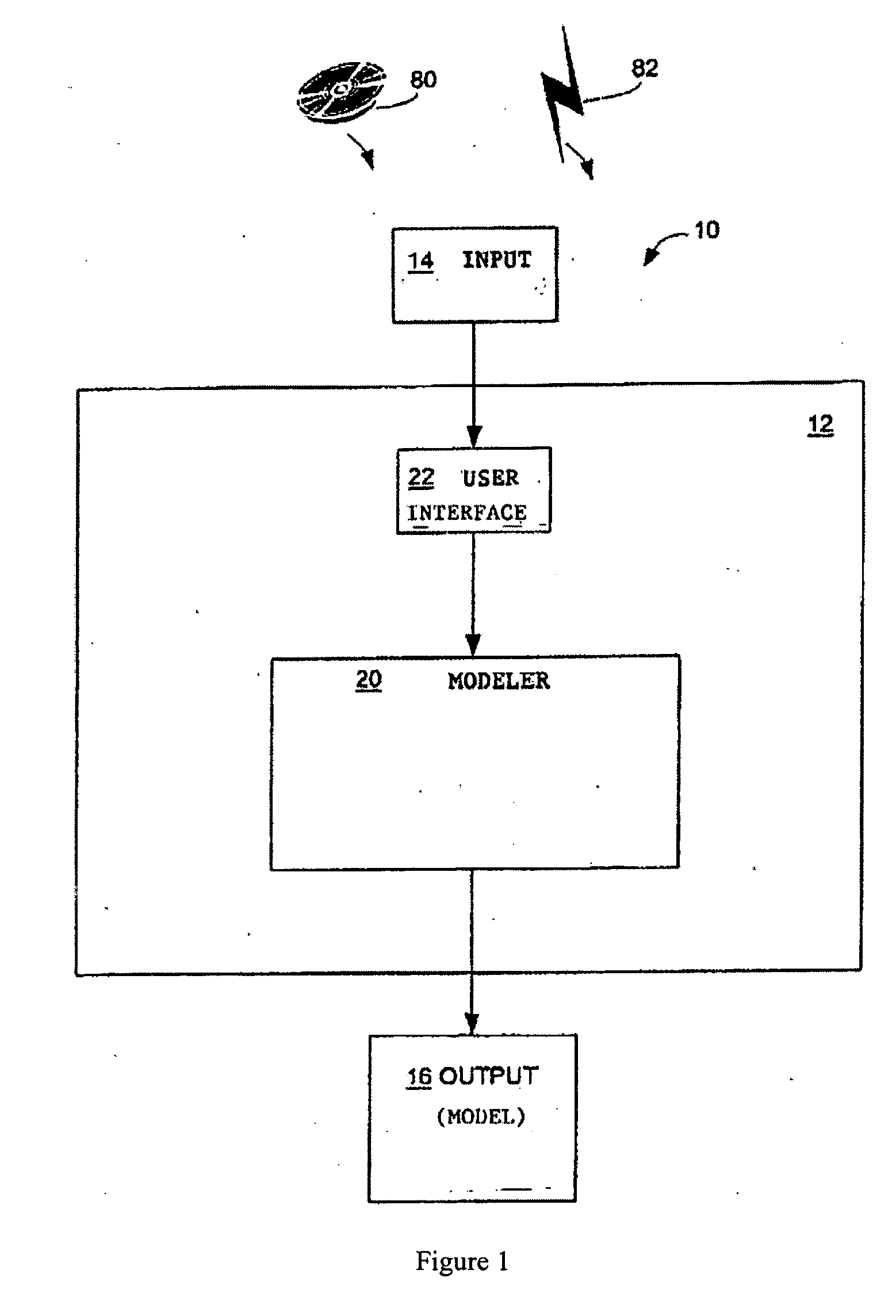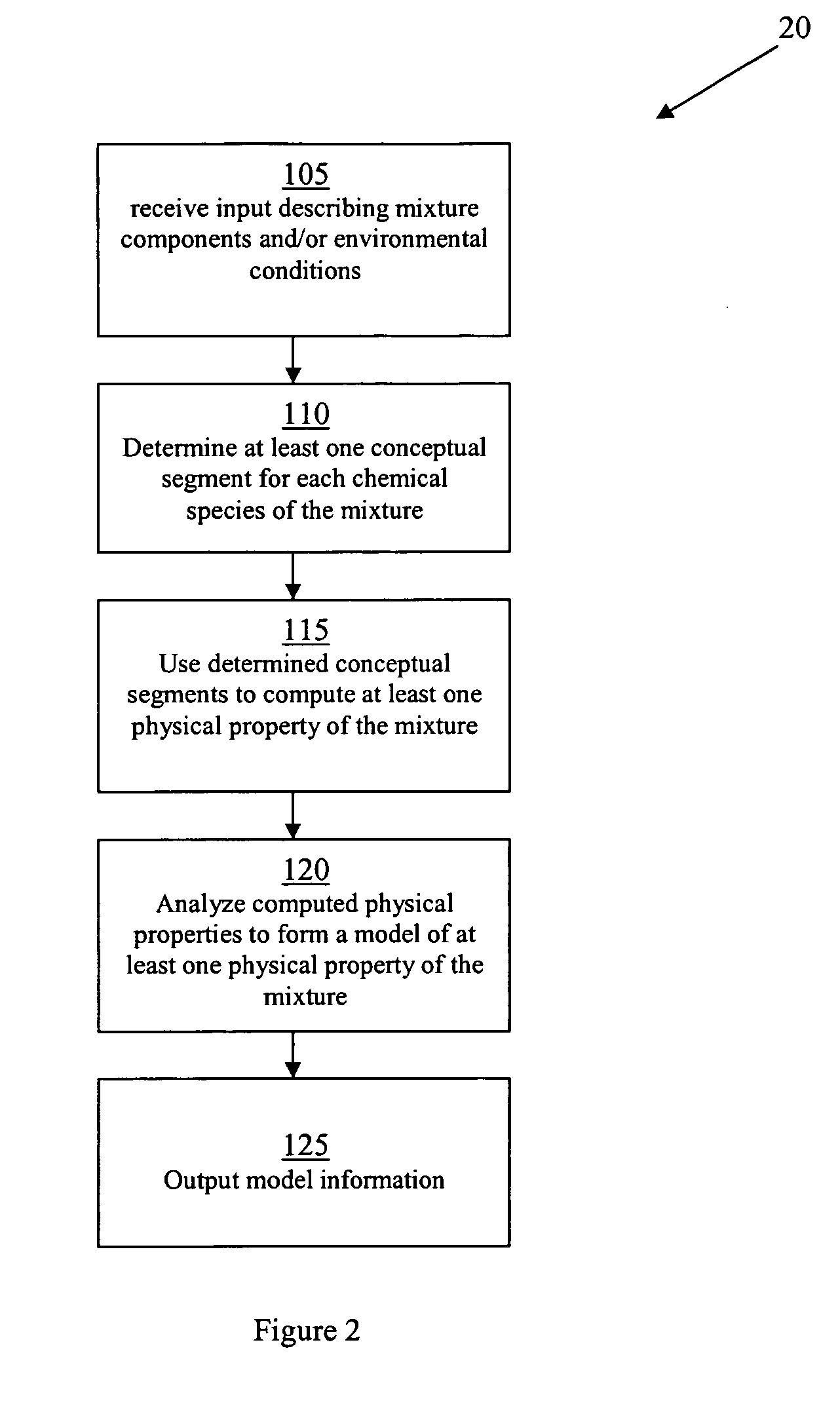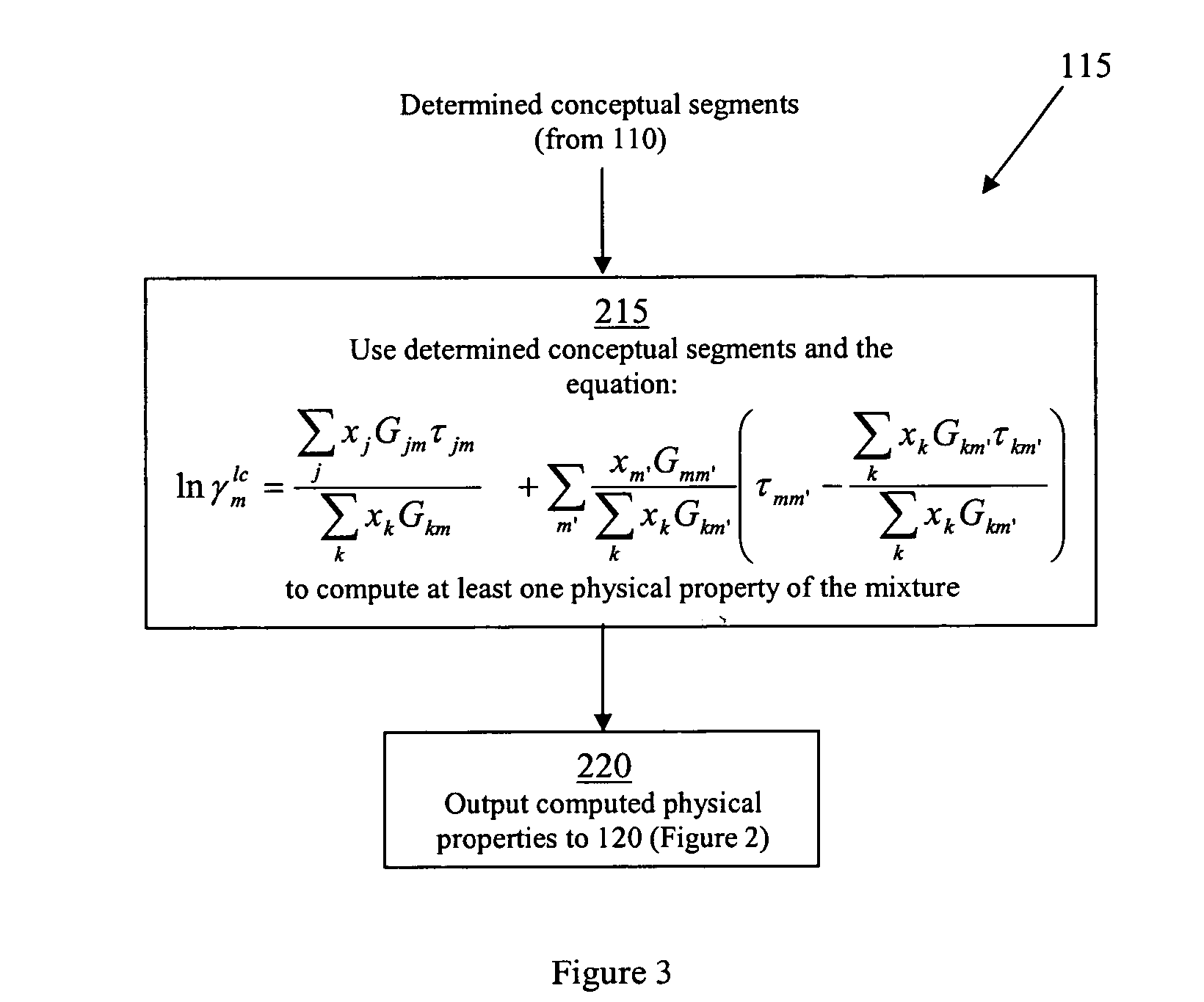Methods of modeling physical properties of chemical mixtures and articles of use
a chemical mixture and physical property technology, applied in the field of methods of modeling physical properties of chemical mixtures and articles of use, can solve the problems of insufficient phase equilibrium data on which to make informed solvents, insufficient models, and insufficient models, etc., to achieve simple and practical modeling, improve accuracy, and improve the effect of accuracy
- Summary
- Abstract
- Description
- Claims
- Application Information
AI Technical Summary
Benefits of technology
Problems solved by technology
Method used
Image
Examples
example 1
Modeling a Mixture of Nonelectrolyte Chemical Species
[0068] A study was performed to determine how well the NRTL-SAC models the solubility of mixtures comprising a solid organic nonelectrolyte.
[0069] The solubility of a solid organic nonelectrolyte is described well by the expression: ln xISAT=ΔfusSR(1-TmT)-ln γISAT
for T≦Tm and where the entropy of fusion of the solid (ΔfusS) is represented by: ΔfusS=ΔfusHTm
xISAT is the mole fraction of the solid (the solute) dissolved in the solvent phase at saturation, γISAT is the activity coefficient for the solute in the solution at saturation, R is the gas constant, T is the temperature, and Tm is the melting point of the solid. Given a polymorph, ΔfusS and Tm are fixed and the solubility is then a function of temperature and activity coefficient of the solute in the solution. The activity coefficient of the solute in the solution plays the key role in determining the solubility. In general, the activity coefficient of the solute...
example 2
Model Prediction Results
[0093] Data compiled by Marrero and Abildsko provides a good source of solubility data for large, complex chemicals. Marrero, J. & Abildskov, J., Solubility and Related Properties of Large Complex Chemicals, Part 1: Organic Solutes Ranging from C4 to C40, CHEMISTRY DATA SERIES XV, DECHEMA, (2003). From that applicants extracted solubility data for the 8 molecules reported by Lin and Nash. Lin, H.-M. & R. A. Nash, An Experimental Method for Determining the Hildebrand Solubility Parameter of Organic Electrolytes, 82 J. PHARMACEUTICAL SCI. 1018 (1993). Also tested, were 6 additional molecules with sizable solubility data sets.
[0094] The NRTL-SAC model was applied to the solvents that are included in Table 3. The molecular descriptors determined for the solutes are summarized in Table 4. During the data regression, all experimental solubility data, regardless of the order of magnitude, were assigned with a standard deviation of 20%. The comparisons between the ...
experiment 3
f NRTL-SAC Model to Prior Art Methods for Pharmaceutical Components
[0104] The solubilities of various pharmaceutical compounds was modeled with the NRTL-SAC approach of the present invention as well as some prior art models (e.g., the Hanson model and the UNIFAC model) to compare their relative accuracies. The pharmaceutical compounds used included VIOXX®, ARCOXIA®, Lovastatin, Simvastatin, FOSAMAX®. (Available from Merck & Co., Inc., Whitehouse Station, N.J.). The solvents used included water, N,N-Dimethylformamide (“DMF”), 1-propanol, 2-propanol, 1-butanol, toluene, Chloro-benzene, acetonitrile, ethyl acetate, methanol, ethanol, heptane, acetone, and triethylamine (TEA).
[0105] Saturated solutions of the compounds in the solvents were allowed to equilibrate for at least 48 hours. Supernatant fluid was filtered and diluted, and an a high pressure liquid chromatography (HPLC) concentration analysis was performed to compare the predicted solubility values with actual solubility value...
PUM
 Login to View More
Login to View More Abstract
Description
Claims
Application Information
 Login to View More
Login to View More - R&D
- Intellectual Property
- Life Sciences
- Materials
- Tech Scout
- Unparalleled Data Quality
- Higher Quality Content
- 60% Fewer Hallucinations
Browse by: Latest US Patents, China's latest patents, Technical Efficacy Thesaurus, Application Domain, Technology Topic, Popular Technical Reports.
© 2025 PatSnap. All rights reserved.Legal|Privacy policy|Modern Slavery Act Transparency Statement|Sitemap|About US| Contact US: help@patsnap.com



